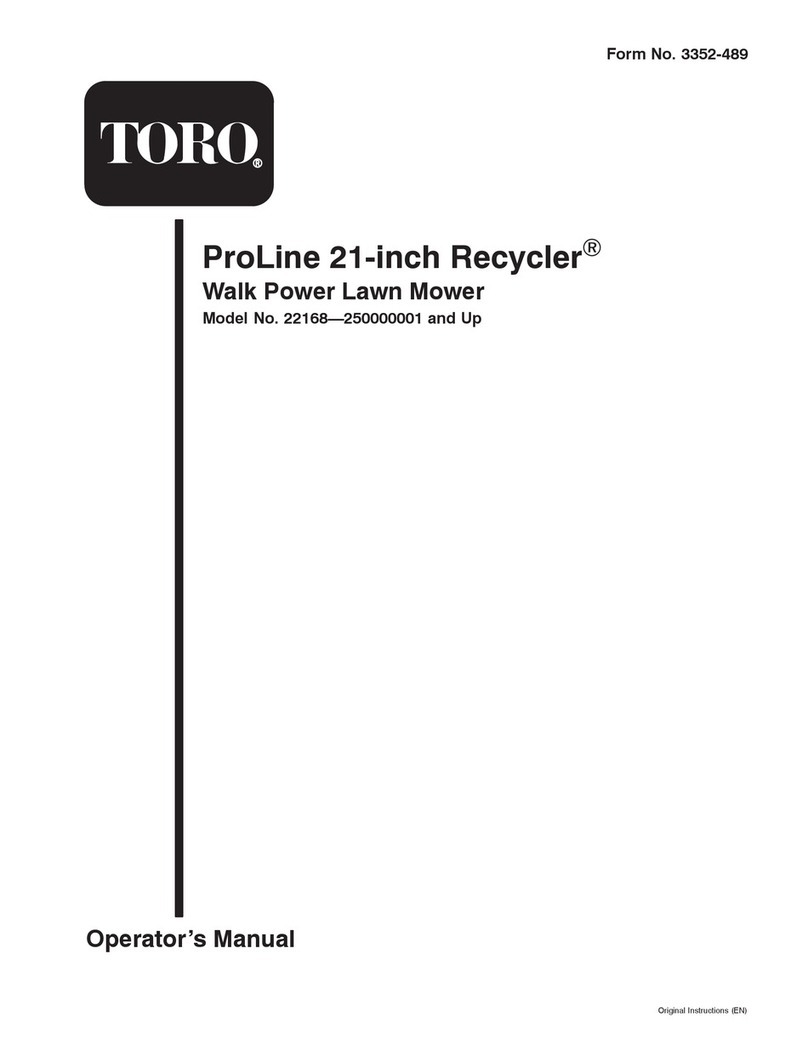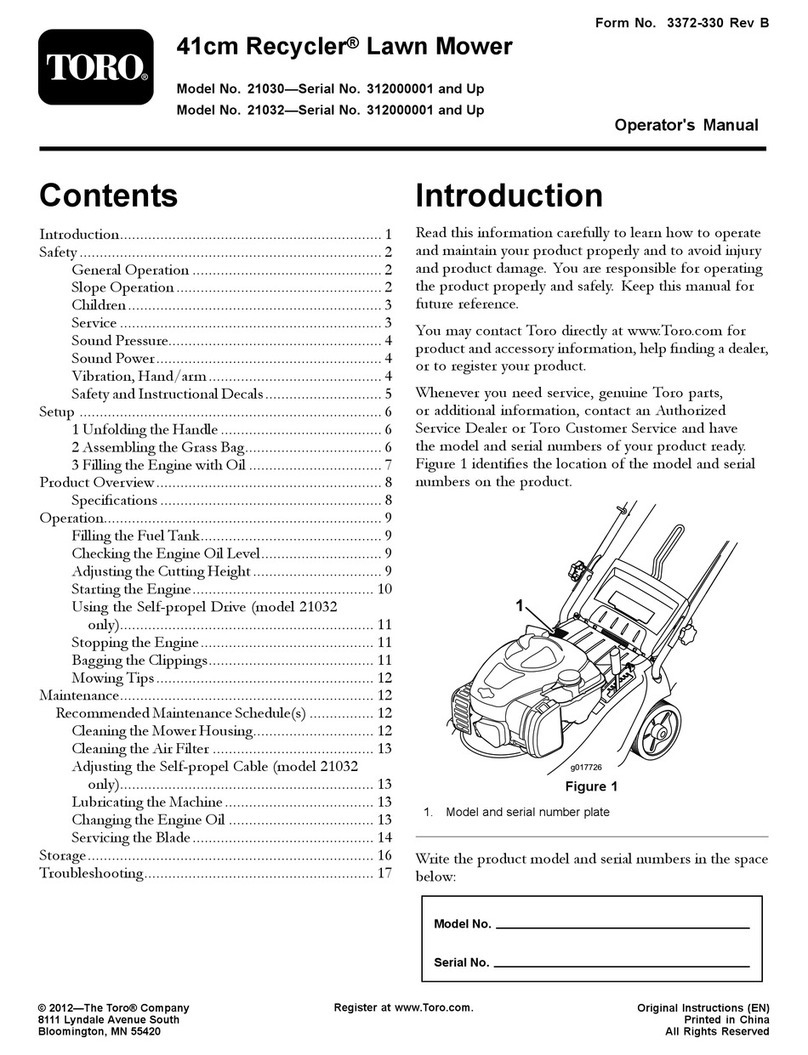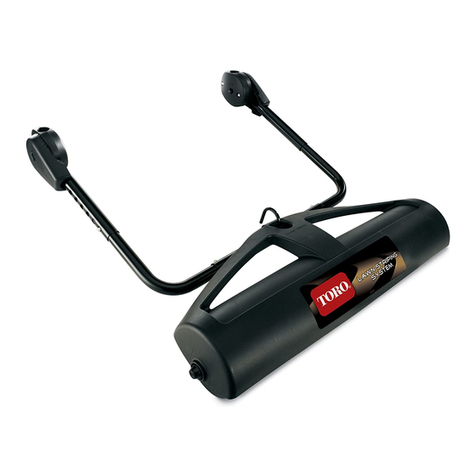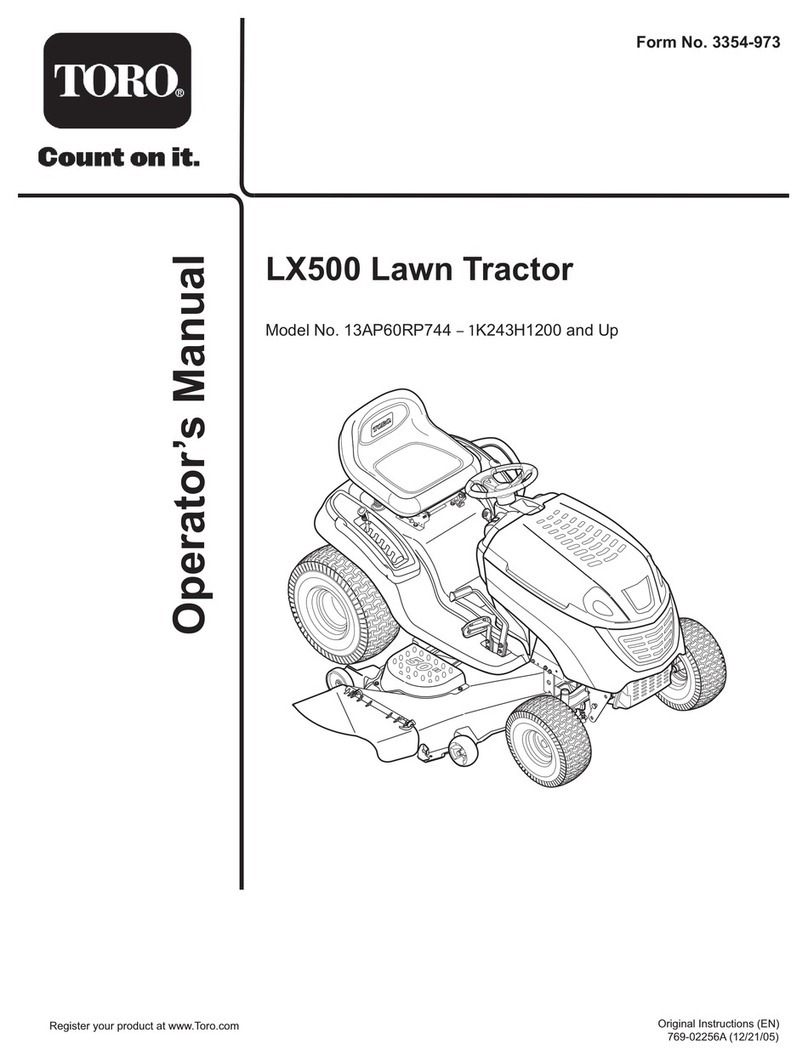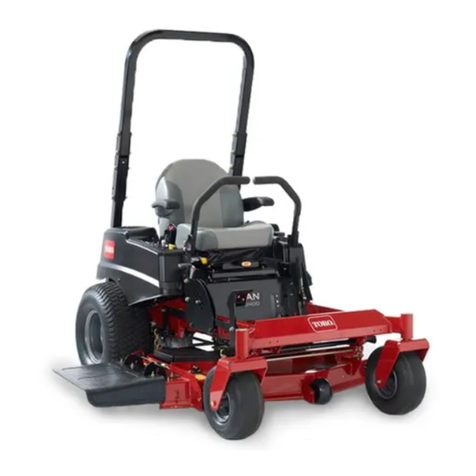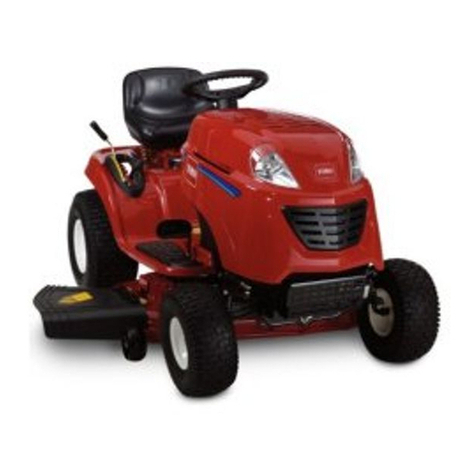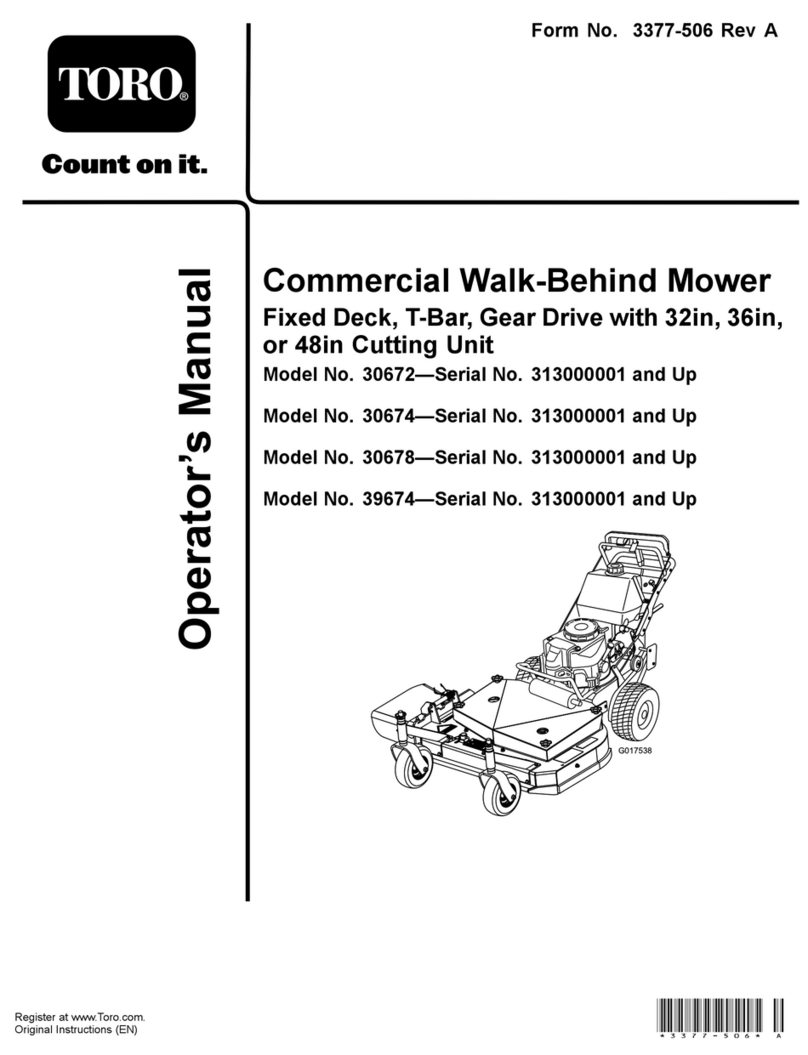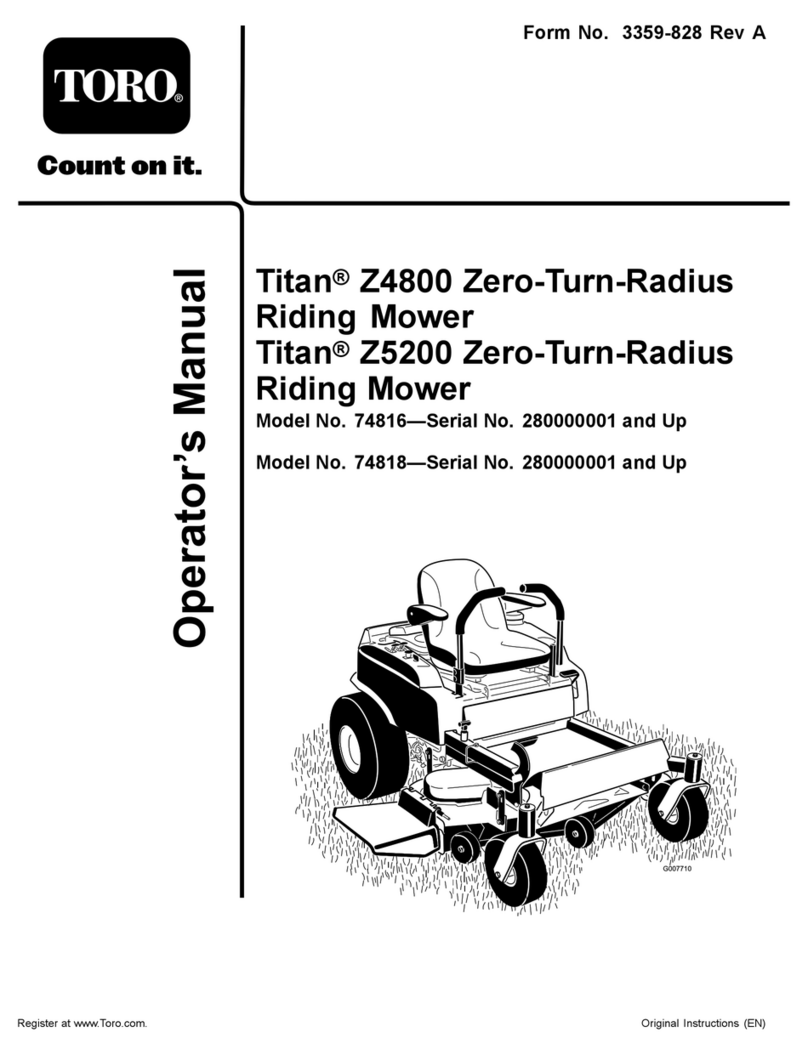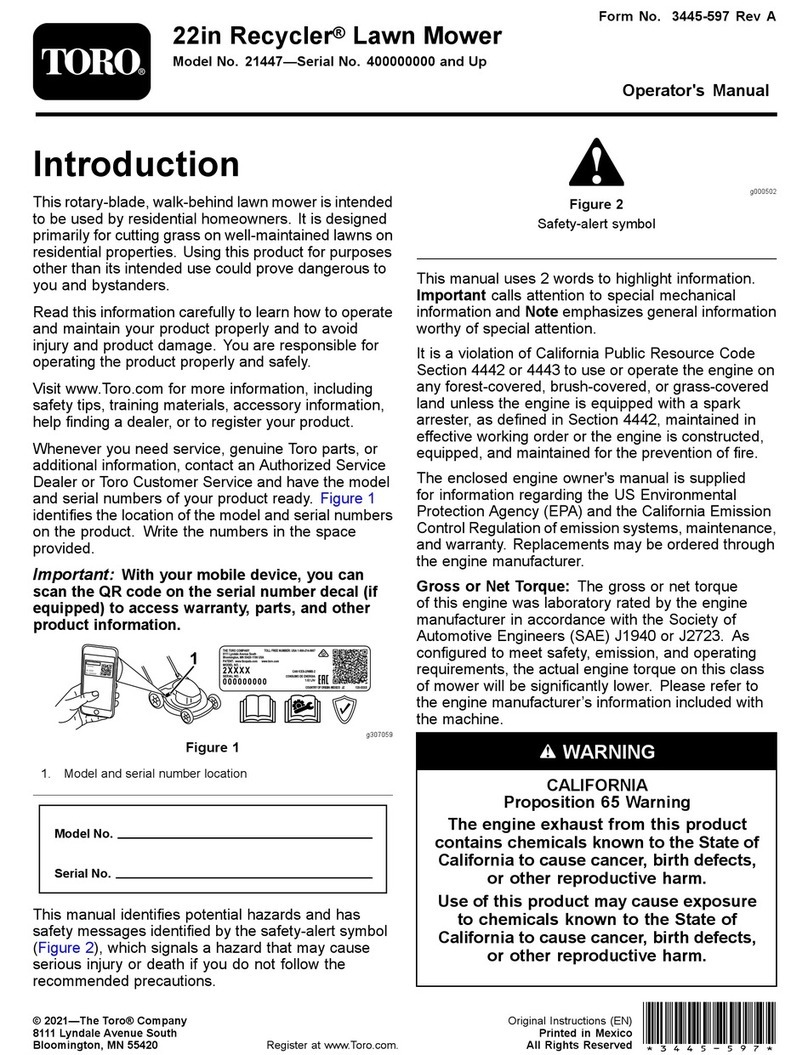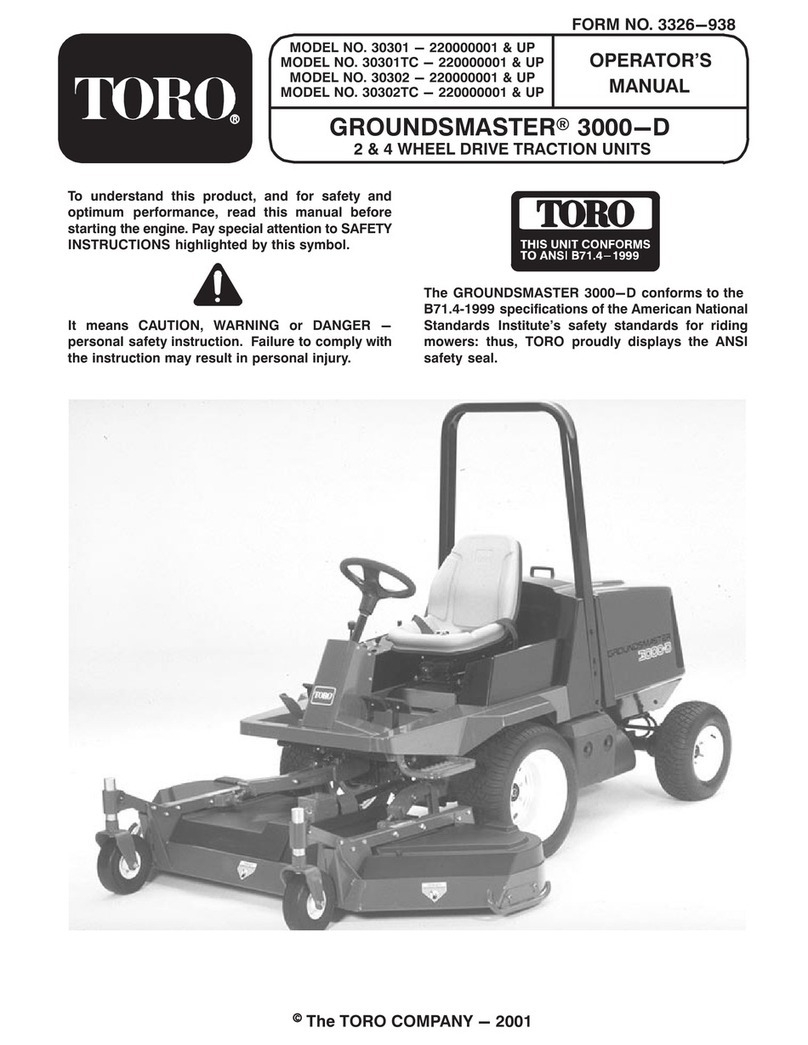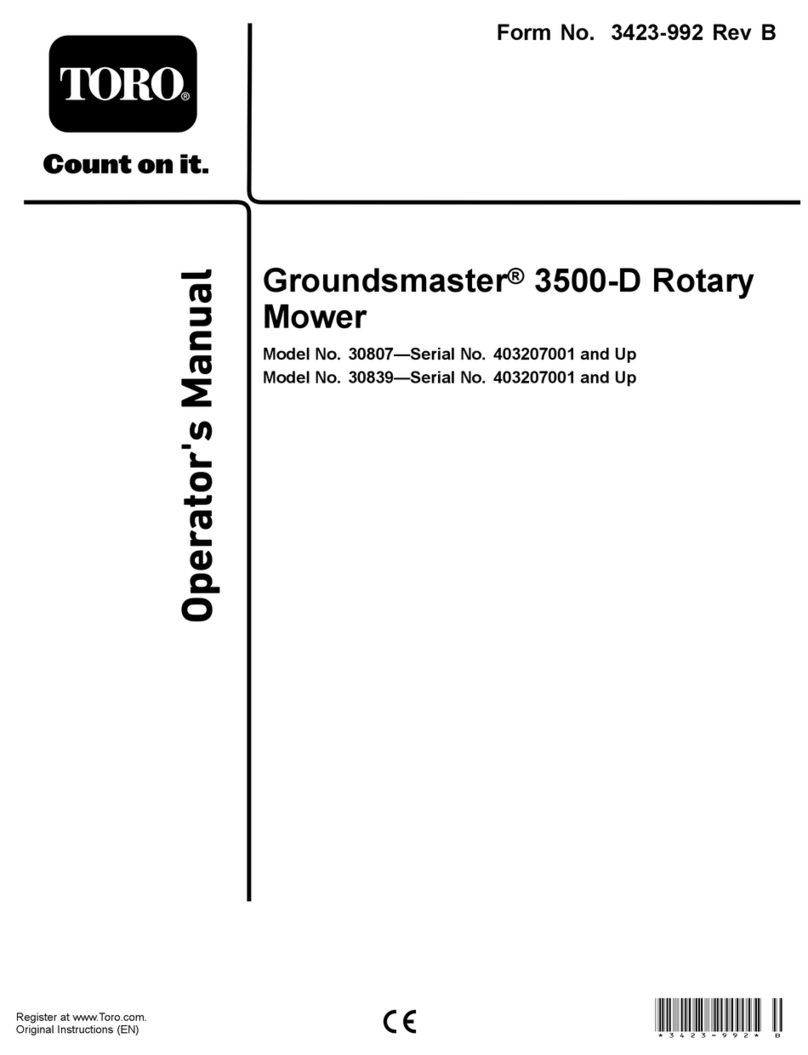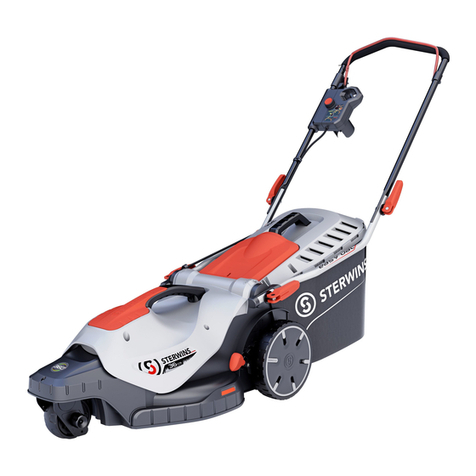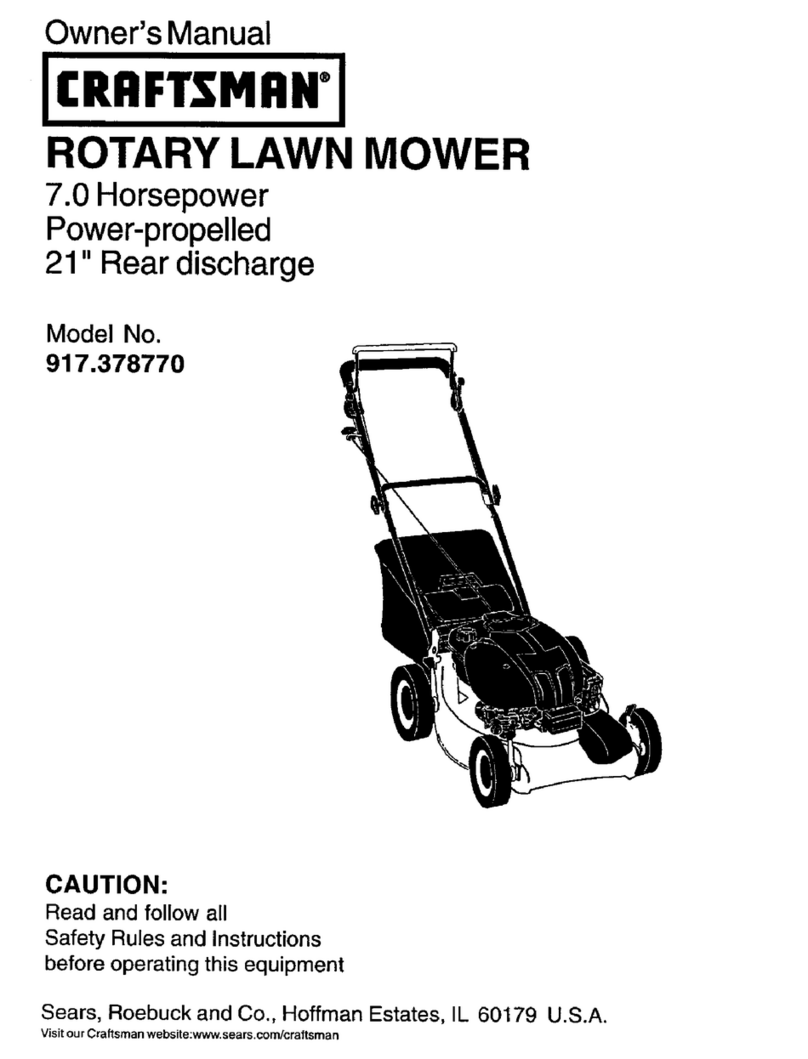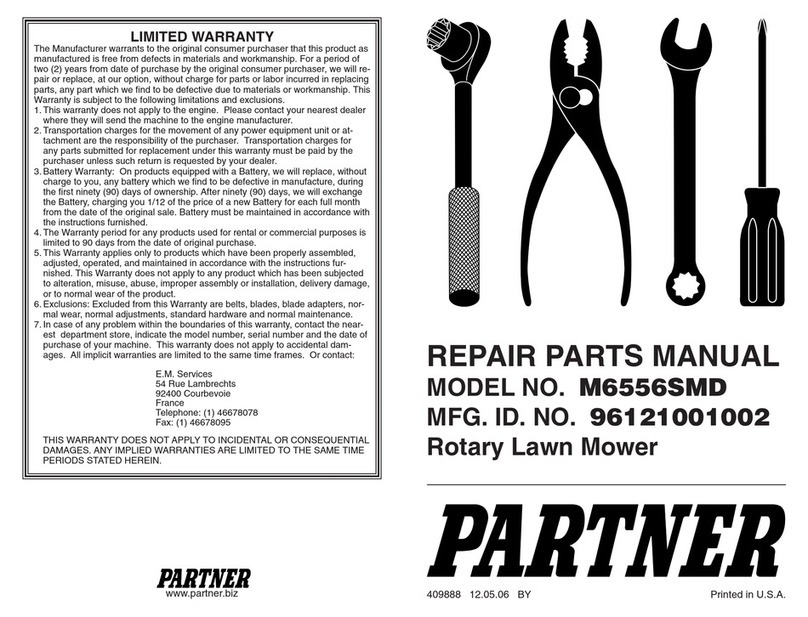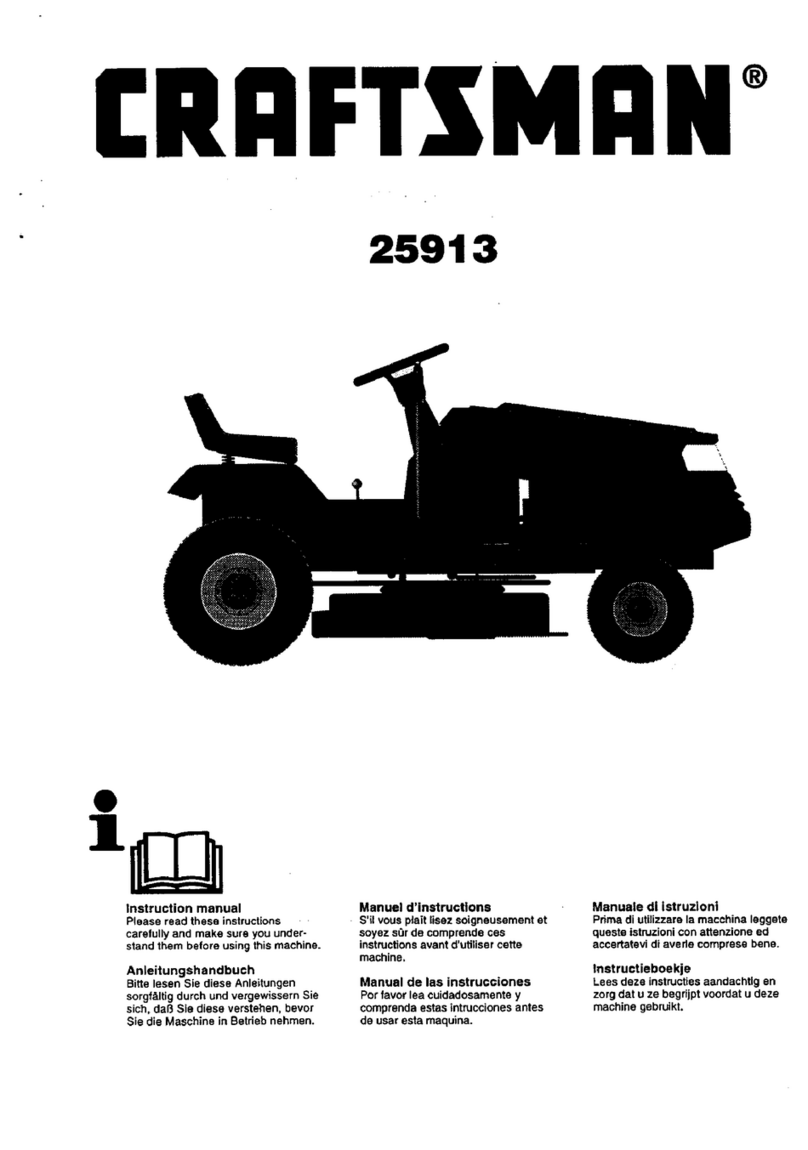serious injury or death.
Using this product for purposes other than its intended
use could be dangerous to the user and bystanders.
Operation
• Always wear substantial shoes. Do not operate
the machine while wearing sandals, tennis shoes,
or sneakers.
• Wearing safety shoes and long pants is advisable
and required by some local ordinances and
insurance regulations.
• Fill the fuel tank until the level is 1 in. (25 mm)
below the bottom of the filler neck. Do not
overfill.
• Check the safety interlock switches daily for
proper operation. If a switch should fail, replace
the switch before operating the machine. After
every two years, replace all three interlock
switches in the safety system, regardless of
whether or not they are working properly.
• The grass deflector(s) must always be installed
and in the lowest position on the cutting unit.
• Pay attention when using the machine. To
prevent loss of control:
– Drive slowly.
– Do not drive close to sand traps, ditches,
creeks, or other hazards.
– Reduce speed when making sharp turns.
Avoid sudden stops and starts.
– Lower the cutting unit when going down
slopes.
• Do not touch the engine, radiator, or muffler
while the engine is running or soon after it has
stopped because these areas might burn you.
• If a cutting blade strikes a solid object or vibrates
abnormally, disengage the power take off, move
the throttle to Slow, set the parking brake, stop
the engine, and remove the ignition key. Wait for
all motion to stop, and inspect the machine for
damage. Repair or replace any damaged parts
before operating. Ensure that the cutting blades
are in good condition and the blade bolts are
torqued to proper specifications (see the cutting
deck operator’s manual).
• Check carefully for overhead clearances such as
branches, doorways, and electrical wires before
driving under any objects. Do not contact the
objects.
• Make sure that the set belt can be removed
quickly if the machine is driven or rolls into a
pond or lake.
• If the engine stalls or the machine loses headway
and cannot get to the top of a slope, do not turn
the machine around. Always back slowly straight
down the slope.
• If the cutting unit discharge area ever plugs,
disengage the power take off and shut the engine
off before removing the obstruction.
• When operating a 4-wheel drive machine or any
machine on slopes, by banks, or drop offs,
always have the roll-over protection system
installed.
• When operating the machine with the roll-over
protection system, always use the seat belt and
make sure that the seat pivot retaining pin is
installed.
Maintenance and Storage
• Before servicing or making adjustments, stop the
engine and remove the ignition key.
• Ensure that the entire machine is properly
maintained and in good operating condition.
Frequently check all nuts, bolts, and screws.
Check all cutting unit blade bolts frequently to
ensure that they are torqued to proper
specifications (see the cutting deck operator’s
manual).
• Make sure all hydraulic line connectors are tight
and all hydraulic hoses and lines are in good
6
